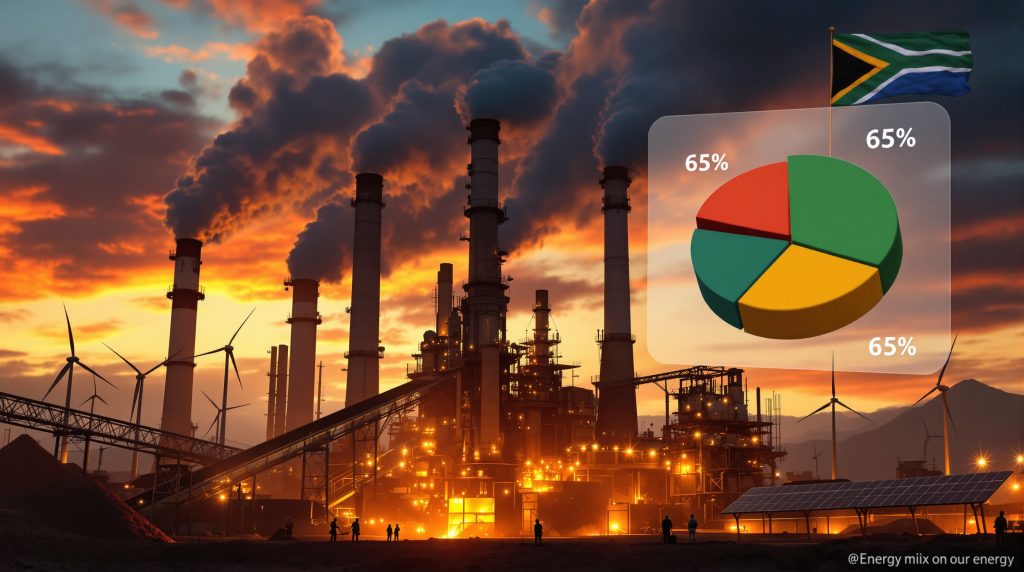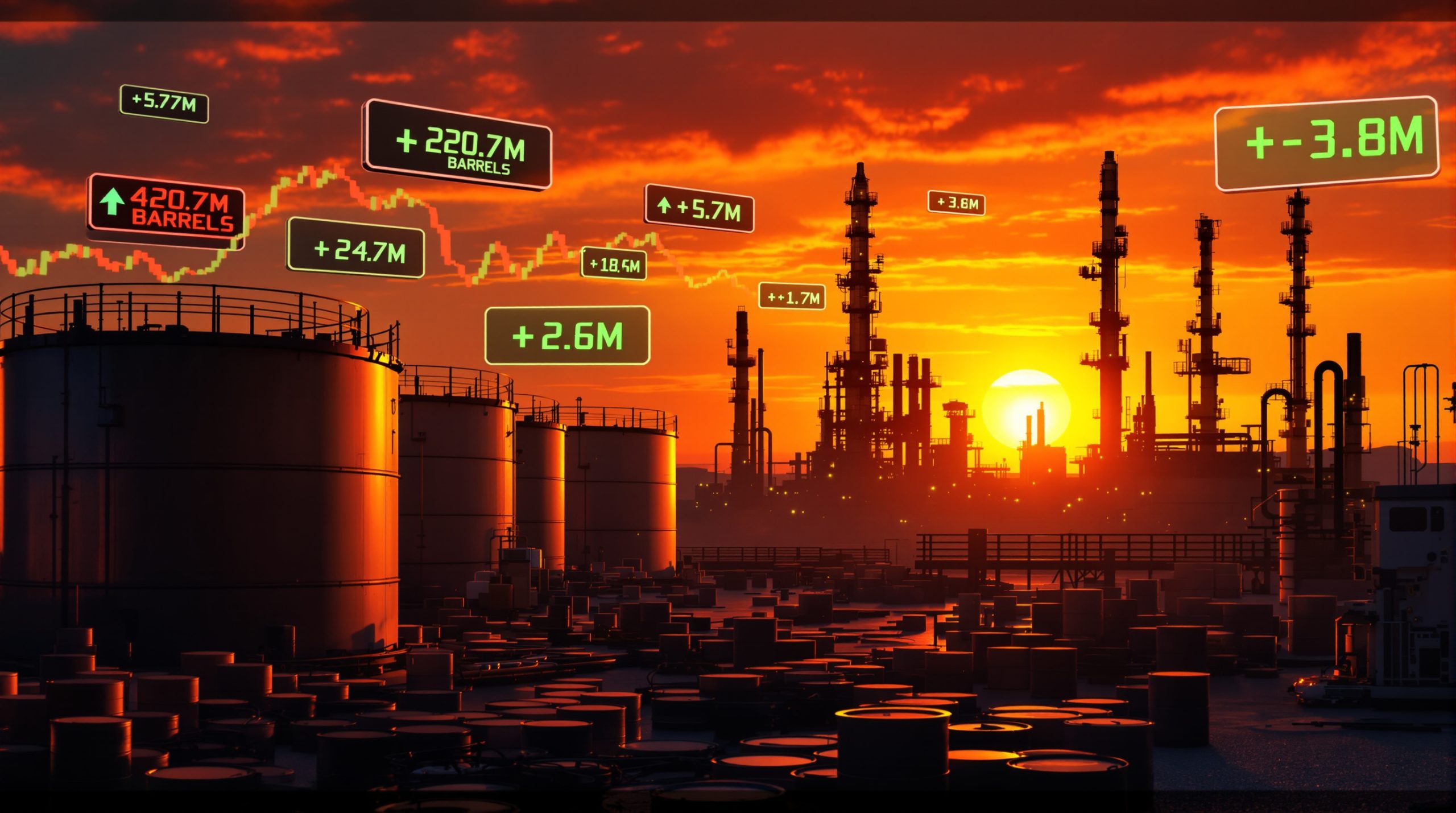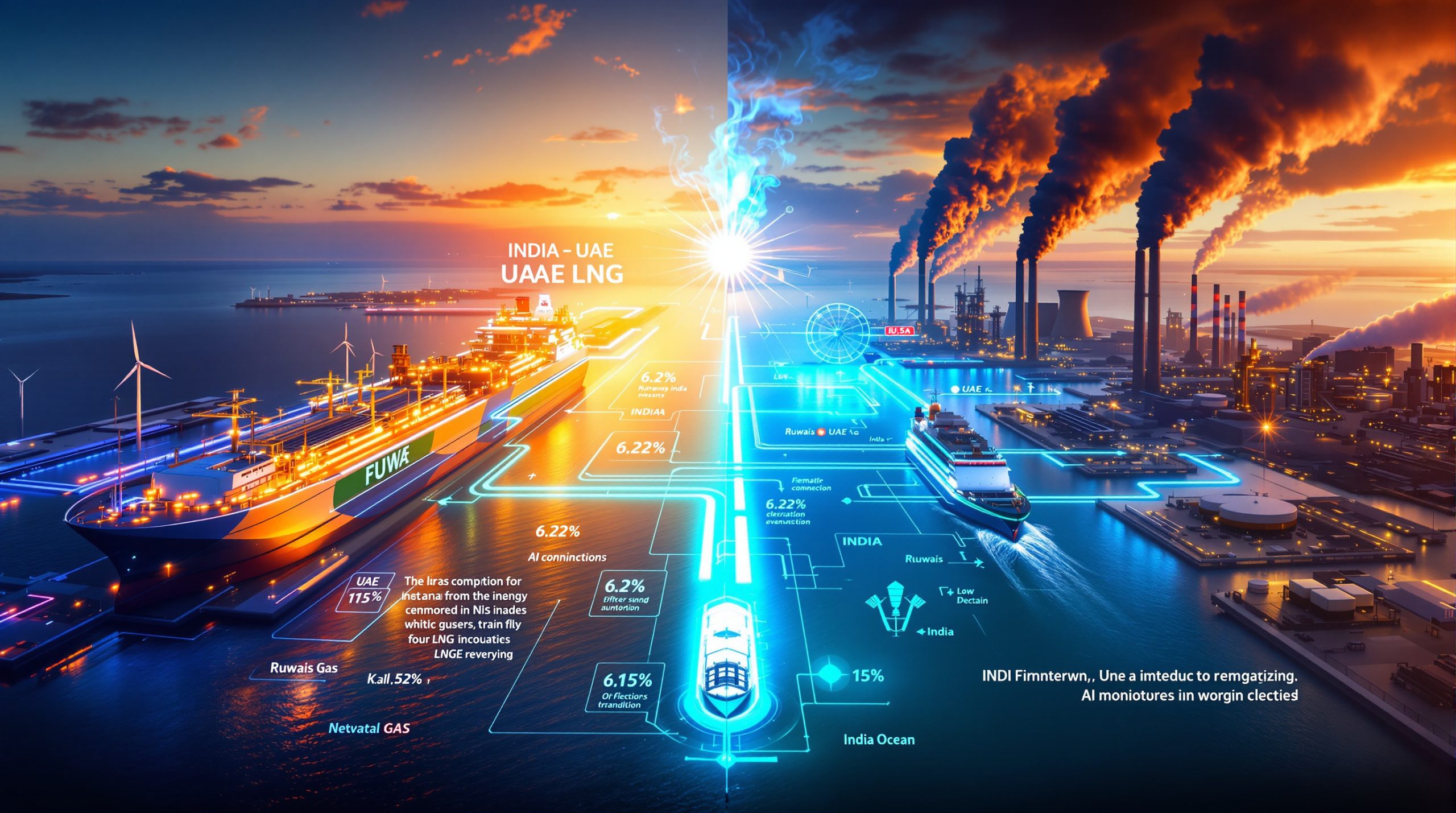South Africa's Smelter Industry: The Coal Dependency Challenge
South Africa's metallurgical and smelting industry faces a critical crossroads. With significant closures threatening thousands of jobs and industrial capacity, the industry's reliance on coal-based electricity has become both its foundation and its challenge. This dependency, deeply rooted in historical infrastructure development and economic realities, has created a complex situation where industrial survival, employment stability, and environmental goals exist in tension.
The industry's ability to navigate this difficult terrain will determine not just its own future, but South Africa's position in global supply chains and its broader industrial development trajectory. As local and international pressures mount, understanding the full complexity of this coal dependency becomes essential for crafting sustainable solutions.
How Has Energy Instability Affected South Africa's Metallurgical Sector?
The Decline of South Africa's Alloys Industry
The South African alloys and metallurgical sector has experienced alarming contraction over the past decade. Between 2014 and 2024, approximately 4,596 direct jobs and 16,900 indirect positions were lost across just 10 operations in the alloys industry alone, according to the Ferroalloy Producers Association. This represents not just economic losses but threatens South Africa's industrial capabilities and position in global supply chains.
The decline continues a worrying trend of deindustrialization, with skilled manufacturing jobs disappearing at a time when South Africa desperately needs economic growth and employment opportunities. Each operation closure represents not just immediate job losses but diminished long-term industrial capacity that can be extremely difficult to rebuild once lost.
Recent High-Profile Closures
The pace of facility closures has recently accelerated, with several major operations shutting down or significantly reducing capacity:
- ArcelorMittal announced the closure of its long-steel plant in 2025, placing 3,500 jobs at risk
- Assmang closed its Cato Ridge Smelter in KwaZulu-Natal earlier in 2025
- Multiple other smelters have been mothballed or permanently closed due to operational costs
These closures represent more than just statistics – they impact entire communities where these facilities often serve as economic anchors. The ripple effects extend to suppliers, service providers, and local businesses that depend on the economic activity generated by these industrial operations.
What Factors Drive Coal Dependency in South Africa's Smelting Operations?
The Energy-Intensive Nature of Smelting
Smelting operations require enormous amounts of consistent, reliable electricity due to the fundamental physics and chemistry of the processes involved. For context:
| Industry Process | Approximate Energy Requirements | Relative Energy Intensity |
|---|---|---|
| Ferroalloy production | 3-5 MWh per ton | High |
| Aluminum smelting | 13-14 MWh per ton | Very High |
| Steel production | 0.5-0.8 MWh per ton | Moderate |
These energy-intensive processes make electricity costs a primary factor in operational viability. The continuous nature of these operations means that interruptions can be catastrophically expensive, damaging equipment and causing production losses far exceeding the duration of the power disruption itself.
The Twin Challenges: Cost and Reliability
South Africa's smelter industry faces a dual challenge that threatens its existence:
- Rising electricity costs: Energy represents 30-40% of production costs for many smelting operations, making electricity price increases immediately damaging to competitiveness
- Unreliable power supply: Frequent load-shedding disrupts production and damages equipment, with some processes requiring days to restart after even brief interruptions
This combination has rendered many operations economically unviable, particularly when competing against international producers with more stable and affordable energy supplies. The technical requirements of smelting make it particularly vulnerable to both problems, creating a perfect storm that has driven the industry's decline.
What Role Does Coal Play in South Africa's Energy Landscape?
Current Energy Mix and Coal Dominance
Coal remains the backbone of South Africa's electricity generation, reflecting both resource availability and historical development patterns:
- Coal accounts for approximately two-thirds of global power generation
- Global coal consumption is projected to remain above 9 billion tonnes in 2025
- South Africa relies heavily on its domestic coal resources for energy security
This dependency has developed over decades, with infrastructure, skills, and industrial processes all built around the availability of coal-fired power. The inertia of these systems makes rapid transitions particularly challenging, especially when alternatives must match coal's reliability and cost structure to maintain industrial competitiveness.
The Industrial Crossroads
South Africa faces competing pressures regarding its energy future:
- The government recognizes coal as one of the country's top five critical minerals
- International climate commitments and financing push for reduced coal usage
- Industrial competitiveness requires affordable, reliable power
This creates what industry leaders describe as a "decisive crossroads" for the country's energy and industrial policy. The choices made in the coming years will have profound implications for South Africa's industrial capacity, employment levels, and position in global supply chains.
How Would Transitioning Away From Coal Impact the Smelter Industry?
The Reindustrialization Challenge
South Africa's ambitions to reindustrialize its economy face significant hurdles if energy reliability and affordability aren't addressed:
- Data centers, a growing sector in South Africa (the fastest-growing data center market on the continent), will substantially increase electricity demand
- Industrial operations require predictable energy costs for long-term investment planning
- International competitors often benefit from lower energy costs and more reliable supply
These challenges become particularly acute for energy-intensive industries like smelting, where electricity costs represent such a large proportion of operational expenses. Without competitive energy prices, South Africa risks becoming primarily an exporter of raw materials rather than value-added products.
The Employment Dimension
The human impact of industrial closures extends far beyond direct job losses:
- Each direct job in the metallurgical sector supports approximately 3-4 additional jobs in the broader economy
- Many affected communities have limited alternative employment opportunities
- Skills developed in the metallurgical sector don't always transfer easily to other industries
This creates a significant social challenge alongside the economic one, with community stability and well-being directly tied to the future of these industrial operations. The concentration of job losses in specific geographic areas compounds these effects, with some communities experiencing devastating economic contractions.
What Solutions Could Address South Africa's Smelter Industry Challenges?
The Case for a Diversified Energy Portfolio
Industry experts argue that South Africa cannot afford to exclude coal from its energy mix if it hopes to maintain and rebuild its industrial base:
- A diversified energy portfolio would balance reliability, affordability, and environmental goals
- Renewable energy can supplement but not entirely replace baseload power in the near term
- Modern coal technologies can reduce emissions while maintaining reliability
This balanced approach recognizes the technical realities of industrial energy needs while still moving toward reduced environmental impact. The key is finding pathways that support transition without sacrificing industrial competitiveness and the associated social benefits.
Balancing Industrial Needs and Environmental Goals
The path forward requires nuanced policy approaches:
- Targeted electricity pricing for strategic industries could preserve industrial capacity
- Investments in grid stability and generation capacity are essential regardless of energy source
- International partnerships could help finance transitions while preserving industrial capabilities
These approaches recognize that environmental goals and industrial development need not be mutually exclusive if properly managed. However, they require careful policy design and implementation to avoid unintended consequences.
What Are the Global Implications of South Africa's Smelter Industry Challenges?
Supply Chain Considerations
The decline of South Africa's smelter industry has ripple effects through global supply chains:
- South Africa has historically been a significant producer of various alloys and metals
- Reduced production capacity shifts dependency to other regions
- Supply concentration in fewer countries increases market volatility and geopolitical risks
This reshaping of global supply chains has implications for industries worldwide that depend on these materials, potentially increasing costs and reducing supply security for downstream manufacturers. The ongoing energy transition insights suggest that these disruptions could have far-reaching consequences for global manufacturing.
Lessons for Industrial Policy
South Africa's experience offers important lessons for other countries navigating energy transitions:
- Industrial competitiveness requires reliable, affordable energy
- Rapid transitions without adequate planning can lead to deindustrialization
- Energy policy must balance environmental, economic, and social considerations
These lessons are particularly relevant for other developing economies seeking to build or maintain industrial capacity while also addressing environmental concerns. The challenges of South Africa beneficiation opportunities illustrate the complex interplay between resource extraction, value addition, and energy policy.
How Should South Africa Navigate Its Energy and Industrial Future?
The Path Forward
South Africa's industrial future depends on finding a balanced approach that:
- Maintains reliable, affordable electricity for energy-intensive industries
- Gradually diversifies the energy mix to reduce environmental impacts
- Supports affected communities through transitions
- Preserves strategic industrial capabilities
This balanced approach recognizes both the immediate needs of existing industries and the long-term imperative of energy transition. By avoiding false dichotomies and embracing nuanced solutions, South Africa can potentially preserve industrial capacity while still making progress on environmental goals. Efforts toward decarbonisation in mining provide important models for how this balance might be achieved.
Policy Considerations
Effective policy responses could include:
- Differentiated electricity tariffs for strategic industries
- Investments in grid stability and generation capacity
- Support for efficiency improvements in existing operations
- Targeted skills development for affected workers
These policies would need to be carefully designed to avoid market distortions while still achieving the goal of preserving industrial capacity during energy transitions. According to research from the Oxford Martin School, a just transition framework is essential for managing the social and economic impacts of energy system changes.
FAQ: South Africa's Smelter Industry and Coal Dependency
Why can't South Africa's smelters simply switch to renewable energy?
Smelting operations require consistent, high-volume electricity that current renewable technologies cannot reliably provide without massive storage capacity. The intermittent nature of wind and solar generation presents challenges for processes that require continuous high temperatures and cannot tolerate interruptions. Additionally, the capital costs of rebuilding facilities to accommodate different energy sources would be prohibitive for many already-struggling operations. While electrification in mining is advancing, the specific requirements of smelting create unique challenges.
How does South Africa's electricity cost compare globally for industrial users?
While historically competitive, South Africa's industrial electricity costs have risen significantly over the past decade while reliability has decreased. This combination has eroded the country's competitive advantage in energy-intensive industries like smelting. Countries with stable, low-cost energy supplies have gained significant competitive advantages, particularly in energy-intensive sectors.
What would happen if South Africa closed all coal-fired power stations?
Without adequate replacement capacity, closing all coal-fired power stations would likely lead to widespread industrial collapse, massive job losses, and economic contraction. A managed transition that ensures reliability and affordability is essential to preserve industrial capabilities. The technical requirements of high-energy industrial processes make them particularly vulnerable to both supply interruptions and price increases.
How do smelter closures affect South Africa's position in global supply chains?
Smelter closures reduce South Africa's ability to add value to its mineral resources, forcing the country to export raw materials rather than processed products. This represents a lost opportunity for economic development and employment creation. It also increases global supply chain vulnerability by concentrating production in fewer regions, potentially increasing price volatility and supply risks. According to analysis by WRI, creating a sustainable path forward requires addressing both the economic and social dimensions of industrial transitions.
Disclaimer
This article contains discussions of industry trends and potential future developments that involve inherent uncertainties. The information presented is based on current understanding and should not be construed as definitive predictions. Economic outcomes, technological developments, and policy decisions may evolve in ways different from those described. Readers should seek additional information and professional advice before making business or investment decisions based on this content. As sustainability transformation efforts continue to evolve, the landscape for energy-intensive industries will likely change as well.
Want to Identify the Next Major Mineral Discovery?
Discover actionable investment opportunities ahead of the market with Discovery Alert's proprietary Discovery IQ model, which instantly alerts you to significant ASX mineral discoveries as they happen. Understand why major mineral discoveries can lead to substantial returns by exploring Discovery Alert's dedicated discoveries page.




